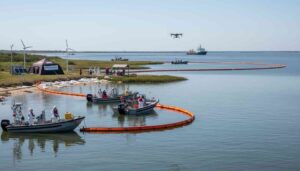Harnessing the potential of renewable energy in 2024 and beyond involves leveraging innovative technologies, adopting sustainable practices, and navigating the evolving energy landscape.
Here are key strategies to tap into the full potential of renewable energy:
- Investment in Research and Development: Continued investment in research and development is crucial for advancing renewable energy technologies. This includes improving the efficiency of solar panels, enhancing wind turbine designs, and exploring new forms of renewable energy such as tidal and geothermal.
- Grid Modernization: Upgrading and modernizing energy grids is essential for accommodating the intermittent nature of renewable energy sources. Smart grids, energy storage solutions, and advanced grid management technologies can help integrate renewable energy seamlessly into the existing infrastructure.
- Energy Storage Solutions: Developing cost-effective and efficient energy storage solutions is vital for overcoming the variability of renewable sources. Advancements in battery technologies, pumped hydro storage, and other innovative storage methods can store excess energy for times of high demand.
- Hybrid Energy Systems: Combining different renewable energy sources into hybrid systems can enhance reliability and stability. For example, pairing solar and wind power can provide a more consistent and predictable energy output.
- Electrification of Transportation: Promoting the adoption of electric vehicles (EVs) and investing in EV infrastructure can significantly increase the demand for renewable energy. This synergistic approach contributes to reducing emissions in both the transportation and energy sectors.
- Policy Support and Incentives: Governments and policymakers play a crucial role in driving the adoption of renewable energy. Supportive policies, incentives, and regulatory frameworks can encourage investments in clean energy projects and technologies.
- Community and Distributed Energy: Encouraging the development of community and distributed energy projects allows local communities to generate and manage their renewable energy. This decentralized approach fosters energy independence and resilience.
- Corporate Renewable Procurement: Many businesses are increasingly committing to using renewable energy. Encouraging corporate renewable procurement through power purchase agreements (PPAs) can drive demand and create a market for renewable energy.
- International Collaboration: Global collaboration and information sharing can accelerate the adoption of renewable energy solutions. Collaborative research, technology transfer, and joint projects can help address common challenges and promote sustainable practices worldwide.
- Education and Awareness: Creating awareness and educating the public about the benefits of renewable energy is crucial for fostering a supportive environment. Informed consumers can drive demand and advocate for sustainable energy policies.
- Circular Economy Practices: Adopting circular economy principles in the renewable energy sector involves minimizing waste, recycling materials, and considering the entire lifecycle of energy technologies. This ensures a more sustainable and environmentally friendly approach.
- Inclusive Energy Access: Ensuring that renewable energy solutions are accessible to all communities, including those in remote or underserved areas, promotes energy equity and contributes to sustainable development goals.
By implementing these strategies, the potential of renewable energy can be harnessed to create a more sustainable, resilient, and low-carbon energy future in 2024 and beyond.
Read more on Sparkview Energy:
Adopting and Promoting Renewable Energy Sources for Diversification
Carbon Capture and Storage: A Promising Solution for Emissions Reduction
Natural Gas Vehicles (NGVs): A Cleaner Alternative for Transportation







